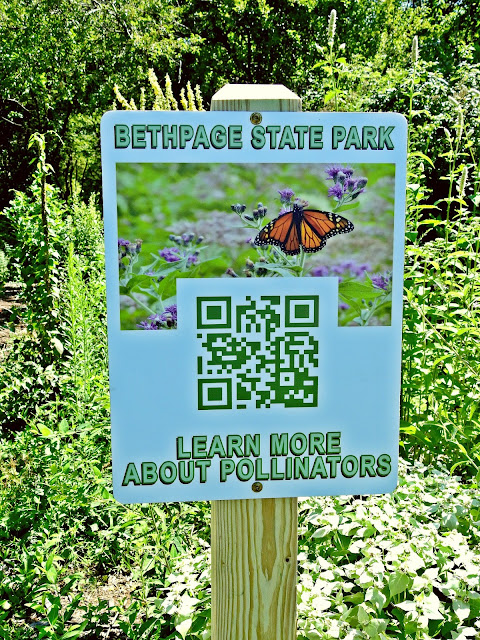Promoting Songbird Habitat for Earth Day 2021!
This Earth Day, our park focused the celebration on the beauty of songbirds and the nests they call home! We have hundreds of birds at Bethpage State Park, some of which we spend a great deal of time tracking, monitoring and researching. Additionally, we incorporate habitats for birds all along our golf courses; this includes creating native gardens, leaving fallen tree trunks, and installing nest boxes (right) for birds to lay eggs and raise offspring.
While wildlife habitats are the cornerstone of our environmental efforts 365 days of the year, Earth Day is the perfect time to reflect on what we do and how we can do more! One way is to provide opportunities of education and participation for the local community. This year on behalf of the Park, I organized a virtual event for Girl Scout Troop 3632! This was our second Zoom collaboration together (click here to read about the first) and so I was excited to teach these bright and passionate scouts about a different ecology topic.
The virtual event began with a discussion on nest diversity. Troops learned that the characteristics of a nest depend on a bird's size, beak shape and strength, but most importantly, the habitat birds live in and the varied resources available. Next, the scouts became familiar with native bird species and specific examples of nests found at our park.
Grasses are a common nest resource utilized by Eastern Bluebirds, Tree Swallows and Black-capped Chickadees. However, other materials serve as better indicators of which species built the nest. Tree Swallows line the inner cup of their nest with feathers. Black-capped Chickadees use animal fur and moss to soften their home for their chicks (in fact, the chickadee in the photo above was collecting moss from that trunk for that exact reason).
House Wren

House Wrens differ. These birds do not make cup-shapped nests of woven grasses but instead stack twigs. The finishing touch are spider egg (lower-left)! Why spiders? One hypothesis is that spiders feed on the mites that disturb newly-hatched chicks. Perhaps this additional resource adds a layer of defense for their offspring!
I also discussed Cornell Nestwatch and our park's program with monitoring nest boxes. According to our research, it takes days - even weeks - for birds to collect just enough materials to complete a nest. Building these homes gets complicated too; often there are interspecies competition and interruptions from other aggressive species (i.e. invasive House Sparrows).
To help our park's nest-building birds, scouts chose to create "Nest Material Stations"! For this project, natural items (grasses, twigs, bark, mosses etc.) were collected and arranged inside suet cages. These prepared structures will be brought back to the park and placed on tree branches, in gardens and near our bird boxes.
"Think of it as creating a Home Depot for birds" said Troop Mom Melissa! Having this abundant supply of appropriate nesting material adjacent to their breeding grounds makes it unnecessary for the birds to "shop around". Looking for materials also requires leaving their home unprotected which can ultimately lead to their territory being taken. Lastly, providing these stations will also save Mama birds' time and energy... perhaps even encouraging her to lay more eggs or have additional clutches.
These nesting hubs are a creative and simple way to make a world's difference in the life of native birds. We thank Troop 3632 for taking the time to learn about our native bird species and for donating their nest material projects to Bethpage State Park.
The hatchlings this Spring will surely be thanking you too!
Happy Earth Day!







Comments
Post a Comment